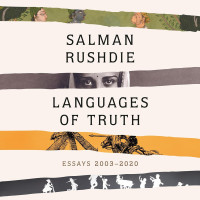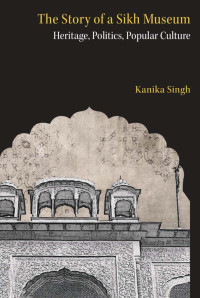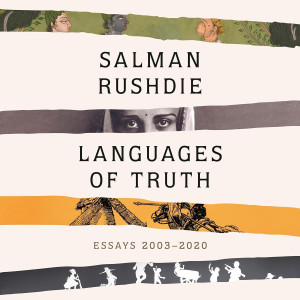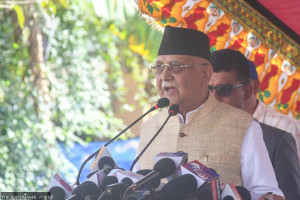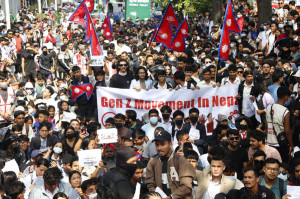Books
An unflinching tale of friendship and bullying
Mieko Kawakami’s ‘Heaven’ remains relevant in a world struggling with cruelty.
Aarya Chand
In a world that continues to grapple with cruelty, class divisions, and systemic oppression, Mieko Kawakami's ‘Heaven’ remains as relevant today as it was upon its publication.
Set in Japan but resonating universally, the novel examines the quiet violence of bullying, the power dynamics that sustain it, and the fragile human connections that form in its wake.
In an era when conversations about mental health, social inequality, and the ethics of suffering are more crucial than ever, ‘Heaven’ offers an unflinching examination of how power operates in the most intimate spaces—our schools, friendships, and inner lives.
Told from the perspective of a fourteen-year-old boy with a lazy eye, ‘Heaven’ immerses us in the torment he faces from his classmates. What makes the novel so striking is how the bullying is not confined merely to physical abuse but extends deeply into the psychological, creating an emotional landscape that is as harrowing as it is profound. The boy’s pain is not only a result of his classmates’ cruelty but is compounded by his sense of helplessness, confusion, self-doubt, and marginalisation, which culminates in an attempt to end his life.
This dynamic is tragically familiar in both Western and South Asian contexts, where bullying is often normalised and brushed off as part of growing up. In Nepal, for instance, bullying can take place not just among peers but within the teacher-student dynamic, where neglect or mistreatment from educators compounds the harm already inflicted by classmates.
The book takes a deep dive into the trauma experience, particularly in how bullying leaves an irreplaceable mark on a young mind. The shocking nature of this event is contrasted by the boy’s inability to express the depth of his pain. He does not have the support systems or language to communicate his emotions, which only intensifies his sense of isolation. The irony of his inability to end his life mirrors the theme of unresolved trauma—the lingering pain of bullying that follows a child long after the physical wounds have healed.
From the perspective of disability, the book also examines how individuals who are marginalised for reasons beyond their control are subjected to social exclusion. The trauma he endures is tied to his perceived difference, which often links back to ideas of weakness and inadequacy.
But as the boy’s narrative unfolds, the text highlights the need for action that acknowledges not just the visible aspects of bullying (like physical violence) but also the emotional toll that it exacts. The boy’s suicide attempt serves as a stark reminder of the long-term consequences of bullying that are not confronted with care or urgency.
One of the most touching relationships in the book is the friendship between Eye (the boy’s nickname) and Kojima (the girl). In the face of overwhelming terror, they find solace in each other. The girl, in particular, serves as a beacon of passive resistance, fighting against the forces that seek to break her down. Her defiance against the bullying she faces—primarily because of her “dirty” clothes—is an act of passive resistance that parallels the concept of non-violence advocated by figures like Martin Luther King.
The girl’s response to her bullying is also deeply tied to her fractured family dynamic. With her parents divorced, and her absent father—a figure who should have offered support but instead embodies emotional neglect—she becomes an emblem of self-victimisation. Her desire to be unseen, encapsulated in her remark “I can’t express how safe it felt in never being seen,” reflects the paradox of invisibility as both protection and a symptom of social erasure.
This emotional isolation, exacerbated by the trauma of familial abandonment, highlights the intersectionality of bullying. The emotional violence she experiences, though hinted at, is not fully explored, which, while powerful, leaves a gap in understanding the full psychological toll of her experiences.
As the story delves into themes of hierarchy, classism, and marginalisation, it becomes clear that the bullying experienced by the characters is not just a matter of individual conflict but also of systemic inequality.
In one of the more unsettling passages, the bullies unapologetically express their dominance: "None of it happens for any reason though. We can do those things for no reason. We can. We do. And you can't. There’s no reason for that, either…’’ This stark statement highlights the power dynamics at play, where those in positions of privilege exert control and cause harm without consequence.
The class divide between the girl and the boy—a stark representation of societal stratification—further illustrates the deep psychological scars left by bullying. The boy, despite his initial privilege, finds himself caught in a psychological trap that makes him a target for the bullies, while the girl, though marginalised, finds ways to assert her agency.
As Momose (one of the boy’s bullies) says, “People who are weak always rely on those weaker than themselves. This is what’s really meant by hierarchy.” This line encapsulates the novel’s critique of social structures that perpetuate cycles of dominance and submission, where the weak are exploited and the strong are, ironically, the ones who refuse to see the injustice happening around them.
From a feminist perspective, the novel explores the contrasting responses of the boy and the girl to their bullying experiences. The boy, who adopts a more passive stance, is constantly grappling with the pain caused by his tormentors, while the girl, although marginalised, finds strength in her vulnerability. Her resistance lies not in overcoming the bullying but in making peace with her reality and embracing her weaknesses as a form of quiet defiance.
However, the book has its pitfalls. It leaves readers uncertain about the moral takeaway, and the narrative’s open-ended nature raises questions about whether there is any lasting hope for the characters. The lack of resolution on issues of marginalisation and bullying may frustrate some readers, as it seems to offer no clear solution to the problems it raises. Additionally, while the book addresses physical violence in great detail, it fails to delve deeply into the emotional violence that accompanies such bullying.
The book's title, with its ironic undertones, points to the complex nature of the friendship between the boy and the girl. In a world of terror and violence, their friendship is one of the few things that provides a sense of stability. Yet, even this bond feels fragile, as both characters remain bound by their suffering. Their brief respite from torment—their friendship—cannot last, and the ending leaves readers uncertain about the future, forcing them to confront the unanswered question of whether suffering can ever be truly overcome.
In conclusion, this story is a powerful exploration of friendship amidst terror, bullying, and marginalisation. Through its portrayal of trauma and the resilience of its characters, it serves as a haunting reminder of the psychological cost of bullying. The book’s emotional resonance lies not in its neat conclusions but in its open-ended exploration of difficult issues.
I’d rate ‘Heaven’ 3.5 out of 5. It powerfully tackles bullying and trauma, but its open-ended nature and disjointed narrative leave the emotional depth.
Heaven
Author: Mieko Kawakami
Year: 2021 (English translation)
Publisher: Europa Editions
Pages: 167




 15.17°C Kathmandu
15.17°C Kathmandu
